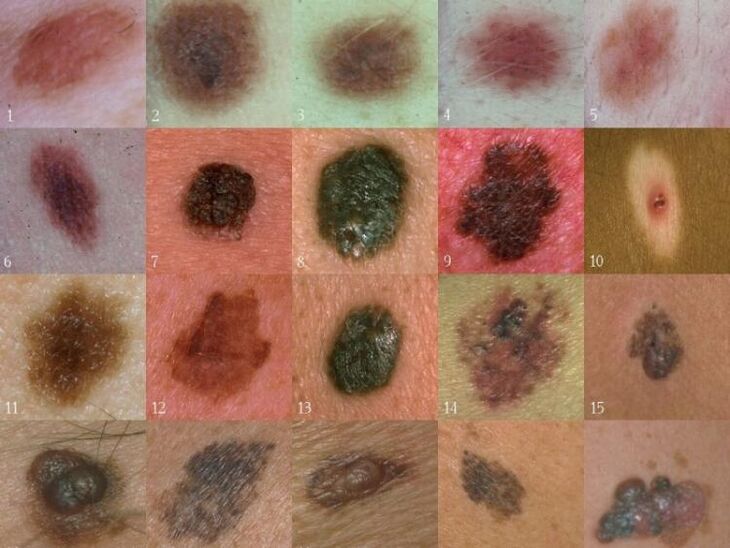
Some types of human papillomavirus, which enter damaged areas of the skin, cause the cells in the upper layer to grow rapidly. This results in warts. The types of warts can be different. They form anywhere on the skin and can vary greatly in size and color. Warts usually do not cause significant problems, they go away on their own. However, in some cases it is worth consulting your doctor and removing them.
The types of warts on the body are usually distinguished by their location.
Types of warts
- Vulgar (usually)
- Plantar,
- Apartment (youthful),
- Genital warts (genital warts)
- Filiforms,
- Senile (seborrheic keratoma).
Common warts
Vulgar or common - this is the most common type of this neoplasm. These are small nodules (up to 10 mm) with a rough surface. They protrude very slightly above the surface of the skin and are completely painless. Common warts form on any part of the body, but most often on the neck, head, elbows or knees.
Another feature of common warts is the appearance next to the "main", large warts, smaller.
Plantar
This is one of the common wart varieties, it is also called "spitz". It is located on the skin of the foot, most often on the side of the sole. It consists of several papillae fused together by a roller. Sometimes the spitz looks like a dense thorn that has grown on the skin. Sometimes plantar warts can grow on the skin. Then they look like a fossa surrounded by a roller with raised papillae. Plantar warts often cause discomfort to a person, as they cause discomfort and even pain when walking.
Tight or uncomfortable shoes can provoke their formation. In such shoes, the skin areas are damaged and become more vulnerable to the entry and development of the human papillomavirus.
Flat
Flat warts are more common in early age, children and adolescents, so they are called juvenile. These are small formations (usually about 3 mm). They can be round or irregular. The surface of juvenile warts is smooth and flat. The color is usually the same as the skin, sometimes flat warts can have a yellowish tinge. These types of warts can form on any part of the skin, but their "favorite" places are the face and hands.
Flat warts usually do not cause physical discomfort and disappear over time. However, when placed in visible places, they cause aesthetic discomfort, so patients often turn to doctors and cosmetologists for removal.
Genital warts
Such warts are localized in the genital area and the infection occurs through sexual contact. Genital warts most commonly spread to the groin, penis, labia and anus. These types of warts can also form in the mouth.
Genital warts are small skin growths with a sharp tip, small papillae. These papillas merge with each other and often look like cauliflower. The color of the genital warts is dark flesh, pink.
Treatment of genital warts is performed by dermatovenerologists with the participation of a gynecologist or urologist.
Filiforms
Filiform warts are more common in the elderly. These are elongated growths resembling a thread. Filament warts can be up to 1 cm in size. The localization of the acrochord is the skin of the neck and face. They are most often formed on the eyelids, lips. There are filamentous warts on the armpits.
Accordions are often injured due to their elongated shape. By themselves, in most cases, they do not go away, and after removal, there are often relapses with the formation of new warts in the same places.
Senile
Seborrheic keratomas most commonly develop in old age due to skin changes. They are located anywhere on the body, but more often on the neck, arms, chest. These are small flat papules with clear borders. Senile warts are more often yellow-pink or brown, up to 2 cm in size. They can be separate, can form whole foci. Dead skin cells form the basis of such neoplasms. At first they are soft, but over time they become dense, covered with cracks.
Senile warts require careful attention because they have a tendency to malignant transformation.
So, there are different types of warts. Most of them are safe, but it is better to consult a doctor immediately and make sure.














































































